Plants of Dawes Arboretum
(Arboretum East)
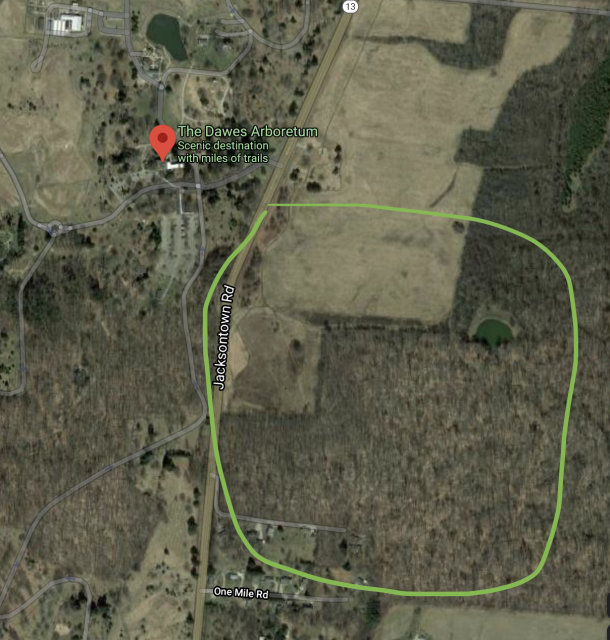
Dawes Arboretum – Eastside is circled
The Dawes Arboretum in Newark, Ohio covers nearly 2000 acres of vegetation displaying over 5,000 species. The Arboretum was founded by Beman and Bertie Dawes in 1929. and by its founding in 1929, over 50,000 trees and plants for education and conservation. The arboretum has several areas for displaying its vast vegetation but our point of interest will be the natural. east side of the Arboretum. There are prairie fields, woodlands, and a pond.
Getting to the east side is quite an adventure! You have to go through a tunnel underneath the highway to make it to the beautiful natural area!

The tunnel!

Also, beware of birds
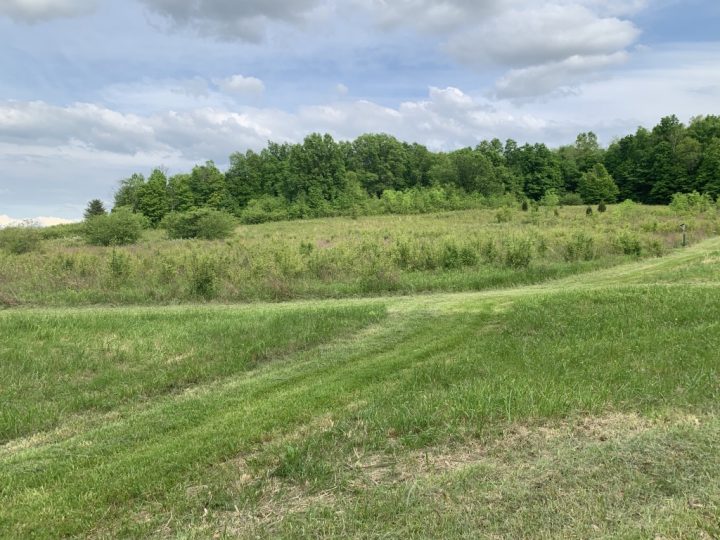
Plains and then grass trails leading to the wooded area in the background
Watch Out!!! – Poison Ivy!
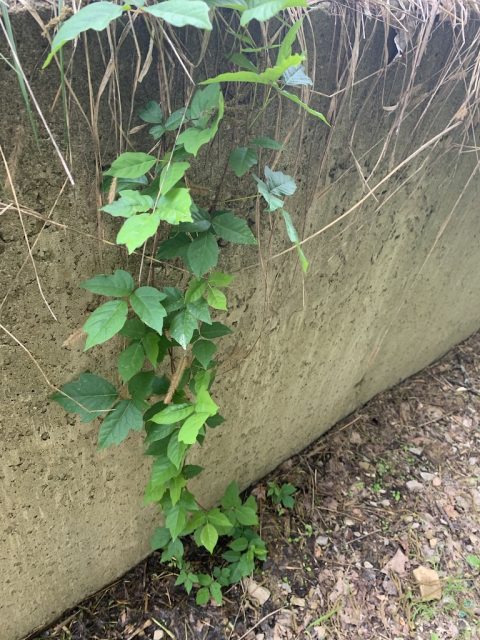
Scary Poison Ivy!
I was worried I might have a hard time finding some of this scary species but within minutes of me searching- she appeared! The trifoliate leaflets are your first clue and then looking at the specific leaf shape/lobes makes it easy to spot once you know what you’re looking for. The shapes vary from being smooth, toothed, or having one notch. I was curious if the plant was actually poisonous (deadly if eaten) and it isn’t! SO really it should be called itchy-but-probably-wont-kill-you Ivy. (https://www.webmd.com/allergies/ss/slideshow-poison-plants)
Plants I had found on my visit:
River Birch
Betula nigra (Betulaceae Family)

River Birch beginning to fruit!
Toothed, alternate simple leaves with hairy buds with shaggy bark leads us to a River Birch! It will quickly colonize moist soil where floodwaters recede due to its quick germination and rapid growth! (http://www.museum.state.il.us/muslink/forest/htmls/trees/B-nigra.html)
Mockernut Hickory
Carya tomentosa (Juglandaceae)
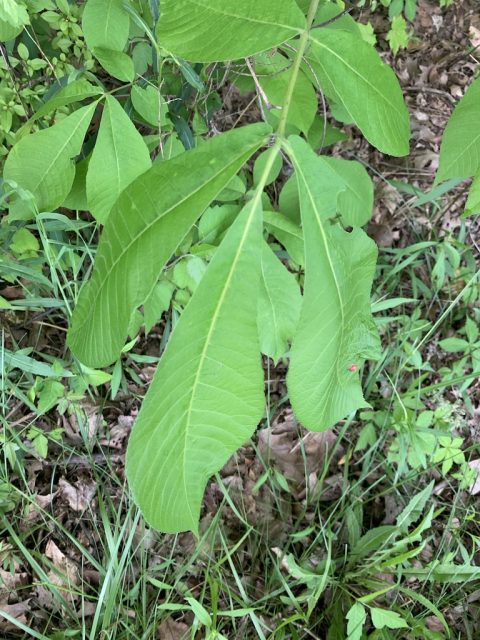
Windblown mockernut leaves
This next one caught my eye with its large alternate, innately compound leaves. The leaves were hairy/soft and so were the twigs leading to a Mockernut hickory! The species name references its hairy leaves because tomentosa is Latin for hairy (http://www.museum.state.il.us/muslink/forest/htmls/trees/C-tomentosa.html)
Multiflora Rose
Rosa multiflora (Rosaceae Family)
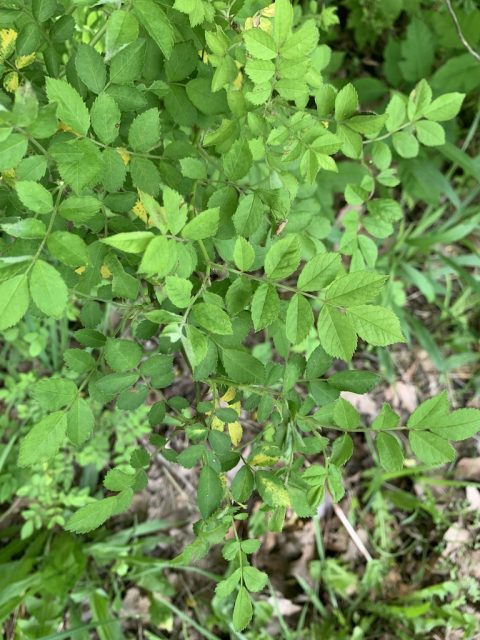
Multiflora Rose Shrub without any flowers
This shrub with alternate, pinnate leaves lead me towards the rose family. Then with counting its many leaflets led me to the multiflora species. Multiflora roses are invasive to the US and have escaped cultivation from gardens. This plant originated in China, Japan, and Korea but was introduced in the 1860s. Since then it has made its way here! (https://www.ecolandscaping.org/07/landscape-challenges/invasive-plants/multiflora-rose-an-exotic-invasive-plant-fact-sheet/)
Riverbank Grape
Vitis riparia (Vitaceae Family)
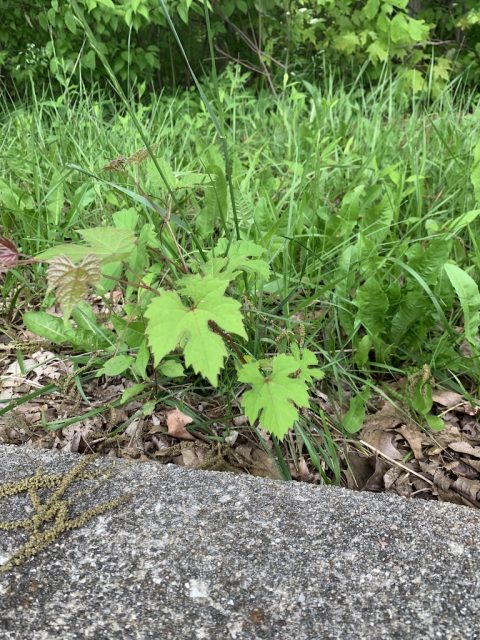
Where are the grapes?
This shrub was just starting out but caught my eye with its red-colored twigs. Tendrils were making its way along the side near the tunnel and its lobed leaflets were very distinctive. The berries are edible but can be a little tart. (https://www.minnesotawildflowers.info/shrub/riverbank-grape)
Common Blackberry
Rubus allegheniensis (Rosaceae Family)
As I was trying to key this cutie, I was getting dive-bombed by a bird (maybe a sparrow?). There was a nearby birdhouse that she had most likely nested in and I was definitely too close for her liking! But we are here for the plants darn it! This plant had 5 white petals and many stamens. It also had toothed leaflets and thorns on the stems. Its a Common Blackberry!
Large-leaved Waterleaf
Hydrophyllum macrophyllum
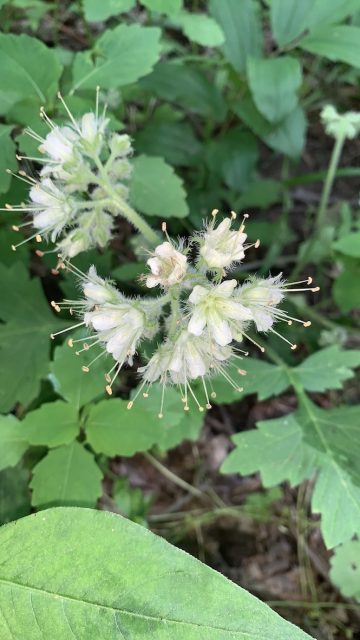
Large-leaved waterleaf with predominant stamens
I keep finding these waterleaves and I am not complaining – they are beautiful! The furry stem identifies the species as the Large-leaved waterleaf. Its scientific name is very similar to the common name for hydro- being Latin for water and macro- being Latin for large!
High and Low Coefficient of Conservation Plants
High
White Ash – CC=6
Fraxinus Americana (Oleaceae Family)

White ash leaves with no snakes in sight!
The White Ash here has a CC of 6 so it is one of my highest cc plants! It has toothed oppositely compound leaves. Its wood is tough and sturdy and is often used for baseball bats! One of the earliest uses for white ashes was to use the leaves to prevent snakes from biting hunters. (https://www.lakeforest.edu/academics/programs/environmental/courses/es282/fraxinus_americana.php)
Red Oak – CC=6
Quercus rubra (Fagaceae Family)

Spikey lobes leaves
These leaves have a conspicuous leaf shape with spikey lobes and an alternate arrangement. They were hairless and it pointed me to the red oak. It has a CC of 6 as well. Red Oak seeds do not do well in shade and require a “gap in the canopy” in order to establish themselves BUT when they do establish, they can live to be 500 years old!( http://www.museum.state.il.us/muslink/forest/htmls/trees/Q-rubra.html)
Tulip Tree – CC=6
Liriodendron tulipfera (Magnoliaceae Family)

Tulip tree leaves!
I really like these trees because the leaves are just so cute! This was only a baby but it definitely had the potential to grow for many years to come! They have a CC of 6. It can be called “canoe wood” because early settlers would use their buoyant trunks for canoes! (https://www.arborday.org/programs/nationalTree/tuliptree.cfm)
Barren Strawberry – CC=6
Waldensteinia fragariodes (Rosaceae Family)
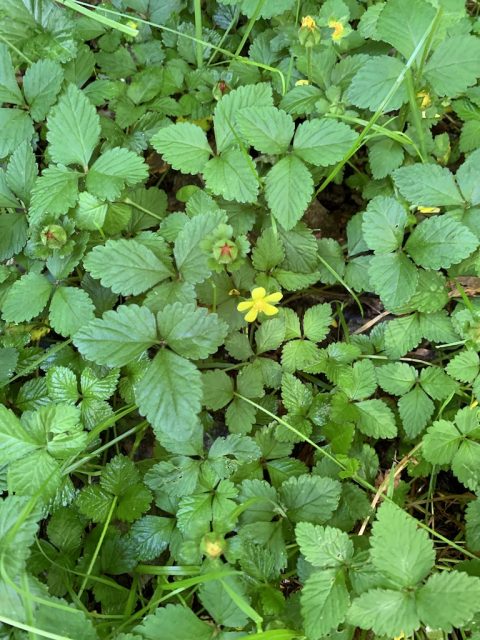
A couple of fruits (achenes really) are starting to come up!
This flowering plant has little yellow flowers with 5 petals and trifoliate leaves. They also had some single-seeded achenes coming through but don’t get too excited – they are inedible! Its genus name honors botanist and writer Count Franz Adam von Waldstein-Wartenberg. (http://www.missouribotanicalgarden.org/PlantFinder/PlantFinderDetails.aspx?kempercode=w950)
Low
Sassafras CC=3
Sassafras abidium (Lauraceae Family)
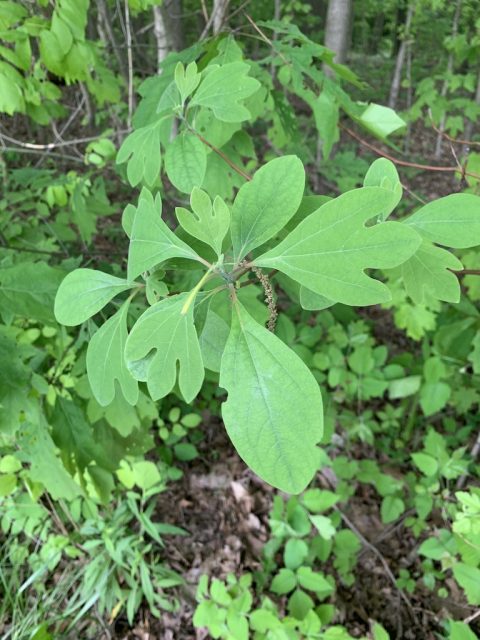
All three leaves are shown with this leaflet group!
This tree is one of my favorites because it has fun leaves. It has a lower CC of 3. They can be three variations – unlobed, bilobed, and trilobed. Its root bark was used to make beverages like rootbeer and if you smell its roots and even leaves sometimes it can smell like rootbeer! However, the FDA banned its use because the safrole (the substance used in the rootbark) was deemed carcinogenic. (https://www.myspicer.com/the-history-of-sassafras/)
Late Goldenrod CC=1
Solidago canadensis (Asteraceae family)

Late Goldenrod near the tunnel
Goldenrod looked familiar to me because the lab I was working in this past year had been using it for a project my mentor was working on! BUT it only has a CC of 1! While it is native to North America, it is highly invasive in many parts of Europe due to its overwhelming seed abundance and distribution. (https://www.cabi.org/isc/datasheet/50599#touses)
Common Milkweed CC=1
Asclepias syriaca (Asclepiadaceae family)
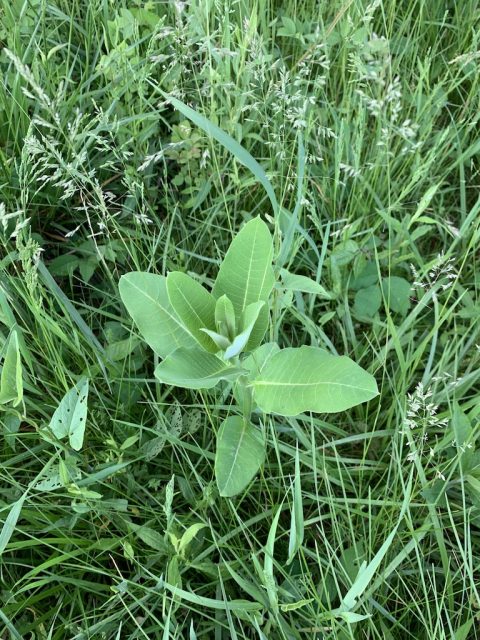
Bring on the monarchs! Milkweeds are monarchs food source.
Common milkweed also is a favorite because of its ecological importance. It has a CC of 1 and can be quite common in many areas. Milkweed was often eaten by Native Americans (the way you would cook and eat spinach) but they had to master cooking it due to its raw toxicity. Its fluff that comes with the seeds was also used in many ways such as stuffing mattresses and using it to make coats.
(https://blog.gardeningknowhow.com/tbt/milkweed-plant-history/)
White Avens CC=2
Geum canadense (Rosaceae family)
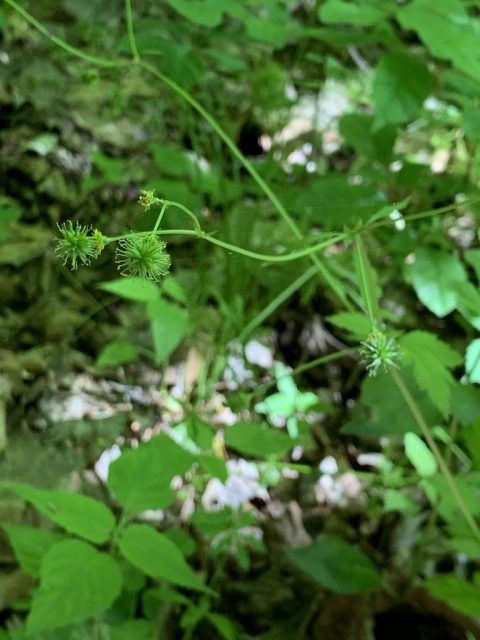
Petals aren’t shown but the seeds are fun shapes!
White avens are very cute little white flowers with 5 petals and long sepals as well as prominent stamens. They surround the many carpels as shown in the picture above. They have a CC of 2 and I had found avens both here at Dawes and at another site (spring valley). The Iroquois Native Americans often used this flower for a love medicine. (https://gobotany.nativeplanttrust.org/species/geum/canadense/)
Interpretive Signs

Various asters?
There were not very many signs on the east side of the arboretum other than maps and guiding arrows. Throughout the arboretum, including the Red Barn Reserve, they had some informational signs that gave some information about local butterflies. I appreciated the habitat and specific wingspan but I think the host plant could be a little more specific in its examples. The arboretum does have a nature visitor center where you can dive into some of the natural wonders at the arboretum but it was not open due to COVID. I really wanted to highlight some of the botanical strengths to this area and the impact it brings to the biodiversity.
With my infographic – I wanted to highlight just some of the biodiversity that the large area can incorporate. Since it has varying ecosystems there can be a lot of benefits to local wildlife. I also wanted to mention that since it is a large natural space, invasives can definitely creep in and take advantage. But I was happy to find lots of natives who can be home to lots of bugs and critters.
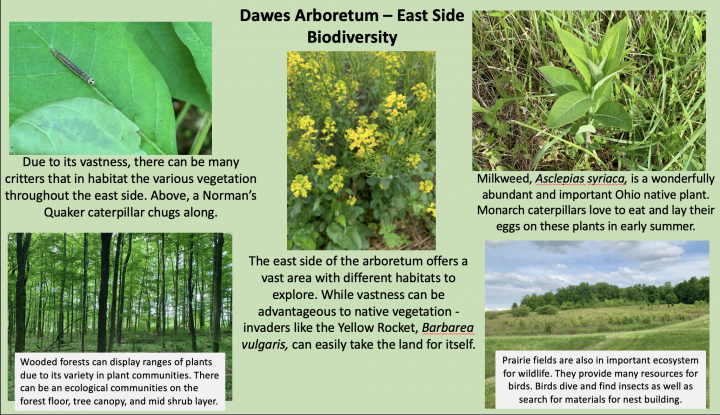
My sign – couldn’t describe all the biodiversity in one sign
